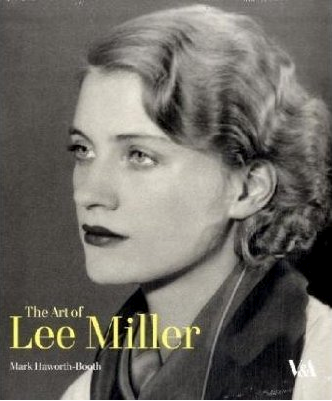A woman conquers a man’s world.
It’s hard to imagine being successful at any one of Lee Miller’s callings, let alone all three.
I don’t mean dilettante dabbling. I mean as good as it gets.
Famous model, surrealist artist, war photographer. Miller (1907-77) did all of these with aplomb and was at all times in the center of the action. Whether posing for Genthe and Stieglitz in her modeling days, making a career as a surrealist artist when married to Roland Penrose and living with Man Ray, or being the only woman war correspondent to set foot at the scene of the crime waged on mankind in Dachau, whence she reported and photographed for Vogue magazine, Miller was as good as they get.

This is a splendid book and highly recommended. When you read that Sir Roland’s son, Anthony, did not learn of his mother’s many accomplishments until shortly before she passed away – she didn’t care to speak of any of them – your sense of wonder and admiration for this very special woman only increases.
Her beauty needs no words. Her originality is there for all to see in her art works. And her heartbreaking reportage from the death camps is the sign of a supreme professional. After witnessing the SS torching Berchtesgaden, Hitler’s retreat in the mountains, she was among the very first to enter his Munich rooms and proceeded, in true surrealist fashion, to take a bath in his tub. As she explained – and there’s a picture of her in the act – she was washing away the evil which she had witnessed and photographed just hours earlier. Just ask, which of us would have had the courage to do that, given the chance?
All of this is expertly set forth by experienced art curator Mark Haworth-Booth in this simply splendid book. The extracts of her searing prose for Vogue are almost as powerful as her pictures, many of the latter so horrific that they never saw publication. Seldom have I read such a clear eyed exposition of the German people’s utter complicity in the crimes of their leaders.
A woman for the ages. Any photographer or historian with an interest in Miller’s era should read this.